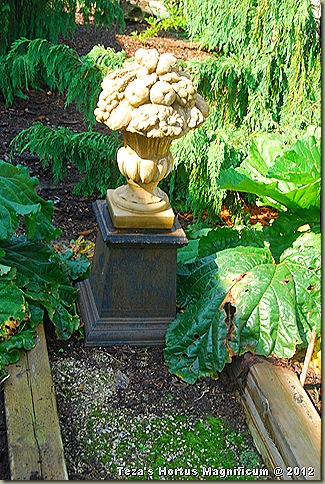Choose plants that will give you the most yield at harvest time. A hybrid designed for your weather, and resistant to local diseases, will give a better yield than non-hybrids.
Organic horticulture requires a green thumb and a lot of patience. This hobby can help you grow food that is free of pesticides. It might sound easy, but is it? Read the tips below to see what you need to begin growing like a pro.
For the best results, select the right kind of soil. Different types of plants require different soils, so check soil requirements for the ones you choose. You may also be able to design an artificial area that contains one type of dirt.
Learn about plant varieties so you can choose the ones with the best yields. A plant that is resistant to disease, or one that is tolerant of extreme weather, will deliver a higher yield.
You don’t want to pick vegetables during the day when it is hot, as that is when they are prone to damage due to them being softer. When you remove the produce from the plant, use shears or a knife to cut them from the vine without twisting, as this can damage the plant.
Healthy Soil
Do not rush planting seeds in your garden. You need to start by adding moisture to the soil. Then distribute the seeds so that they are evenly spaced and have sufficient room to grow. Bury your seeds about three times deeper than the size that they are. Some seeds require direct sunlight to grow, and these should be left on top of the soil.
Healthy soil will also assist in your battle against pests. If you have healthy looking plants, they are stronger and more resistant to diseases and bugs. For healthy plants, start with healthy soil that is properly amended and free of chemicals in order to avoid salt accumulation.
Mix used coffee grounds into your soil. Coffee grounds contain many of the essential nitrogenous nutrients that plants are able to use. Usually, nitrogen is limited with a plant, but using coffee grounds, diluted urea, or compost can make your plants grow faster and taller.
Annuals and biennials are an excellent way to add a splash of bright color to your flower gardens. These types of flowers grow at high speed, which gives you more flexibility in changing the look of your flower beds as the seasons change. They can be used to fill in gaps in your garden between the perennials or shrubs so your garden looks fuller. Some flowers you can use are rudbekia, petunias, cosmos, marigolds, or sunflowers.
If you sell or use organically grown produce in a commercial setting, you should communicate your commitment to natural growing by becoming certified. This will not only increase sales, but it will demonstrate to your customers that your products are legitimate and that you are doing what it takes to grow the best crops.
For the right results, get the right type of soil. Fertilizer can enrich the soil to make it more viable. It can happen where one artificial area is designated to have just one type of soil.
Add mulch to flowerbeds and your garden that is about three inches and made from various organic materials. Mulch adds nutrients to the soil, keeps the soil moist, reduces weed growth, and makes beds look tidier.
Before you begin to plant your garden you will need to check the soil. For a tiny fee, a soil analysis may be done, and based on the results, the soil can support a growing garden by you enriching it as necessary. Save yourself the trouble of a failed crop by contacting your local Cooperative Extension to preform the soil test.
There are all sorts of plants that you can plant in your garden. Most acid-loving plants really thrive in mulch. These types of plants should be mulched with a thick layer of pine needles around fall every year. When the needles begin decomposing, they will add acid into the ground.
Prior to planting your garden, devise a plan. Doing this makes it easier to keep track of where you planted what when you first start to see sprouts. In addition, some plants are so small you might forget you planted them once all your plants sprout. Planning stops these plants from getting lost in the crowd.
Before starting an organic garden, know the basics of watering. Obtain a soaker hose to use for the watering. A soaker hose will keep the base adequately watered and prevent the plant from drying out through evaporation. It is recommended you water your plants early in the morning.
To garden properly in an organic fashion, requires a lot of patience, a lot of elbow grease and even more know-how. This skill utilizes a simple patch of ground to produce healthy, delicious, natural foods. If you do the hard work and take the time, you will learn the ropes of organic horticulture.
Your organic garden will benefit from small ditches between the plant rows. This way, when you water your plants, the water will flow directly to them, and they won’t need to be watered as much. This conserves water, which translates into conserving money.
